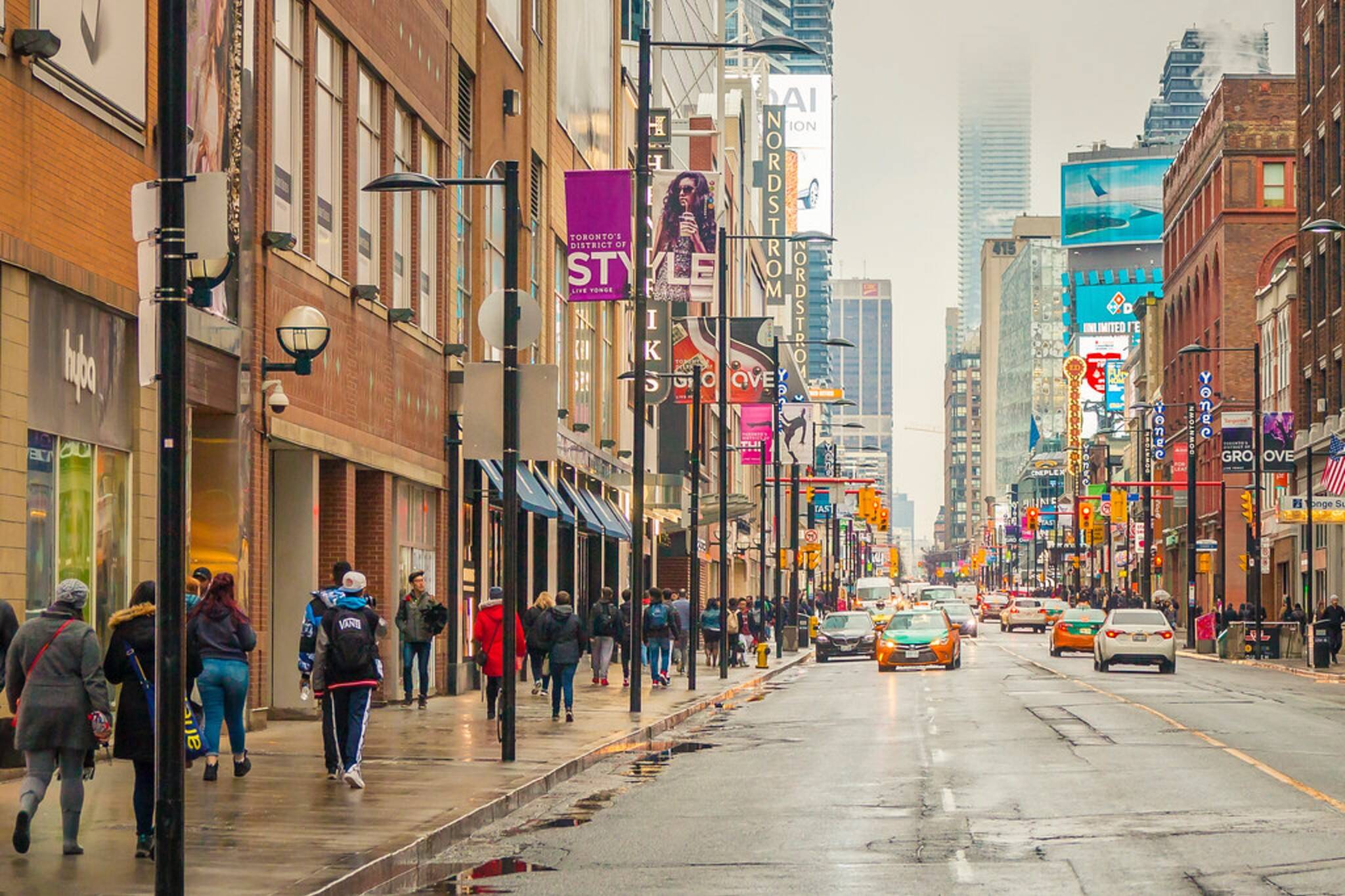
This is what a carless downtown Yonge Street could one day look like
The intense volume of pedestrians that frequent the downtown portion of Yonge Street is growing by the day, so the city is looking to make some serious changes to accommodate the growth.
In order to do this, they've launched a project called yongeTOmorrow, which focuses on the section of Yonge Street from Queen Street to College/Carlton Street.
In the current stage of the project, the city just released a Public Event outlining three different solutions they're considering for the stretch: two car lanes, one car lane or no car lanes during the day.
City has unveiled the short-list of options for downtown Yonge Street, part of the YongeTOmorrow process: two lanes, one lane or no lanes (during daytime.) https://t.co/TyNAmxMZwi (PDF) pic.twitter.com/SzUaZr57bG
— Matt Elliott (@GraphicMatt) November 7, 2019
Back in May, the City held a public event to focus on people’s future priorities for moving through Yonge Street in addition to a review of 14 potential alternatives.
They've now settled on the short-list, and they're looking into which option will work best.
The document released today explains that more people are choosing to walk, bike and take transit nowadays, and this shift is expected to continue.
According to the document, the population and employment in the downtown core is expected to double by 2041.
In order to choose the best possible solution to accommodate the growing population, the three short-listed solutions will be evaluated based on mobility, liveability, prosperity and sustainability.
"These 3 Street Design Options prioritise pedestrian movement and experience on Yonge Street," the document states.
"They provide a significant opportunity to add planting, seating, and patios. The central open space in each option supports flexibility and hosting events. The driving environment is focused on providing access to Yonge Street as a destination, rather than a route for passing through the city."
The document also explains that cycling infrastructure is not being recommended for Yonge Street, but instead they're looking into bike lanes on nearby Bay, Church or University.
There are still many decisions to be made before Yonge Street in downtown Toronto transforms into a pedestrian haven, and the city is looking for feedback on everything from the width of sidewalks to whether cars should be allowed to use the stretch.
Of the car-free options, staff looked a two configurations. (In both cases, Street would be open to cabs/Uber, buses and service vehicles at night.)
— Matt Elliott (@GraphicMatt) November 7, 2019
One option provides daytime pedestrian-only zone (pink area) from Queen to Gerrard. Other is more limited - Dundas Sq to Gerrard. pic.twitter.com/7KiHCUtdnZ
Currently, it's looking like the preferred solution is the carless one, but there's still a ways to go before anything is set in stone.
Once the city has received feedback from the public, they'll review and report on the feedback, continue to meet with stakeholders, finalise the preferred alternative solution, develop alternative concepts for the preferred solution, hold a third Public Event in the spring of 2020 and then report to council next summer.
Latest Videos
Latest Videos
Join the conversation Load comments







